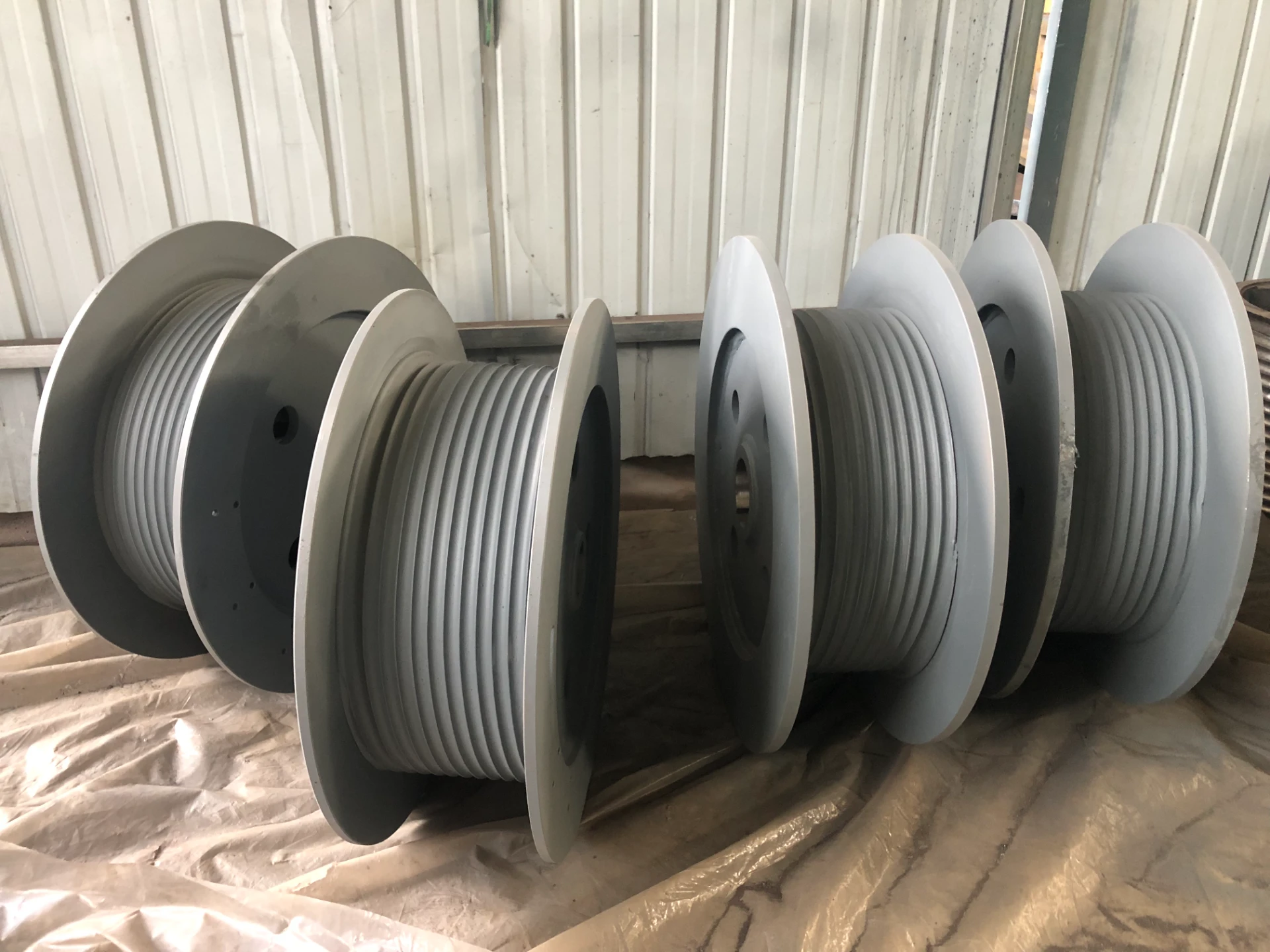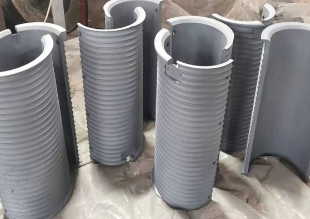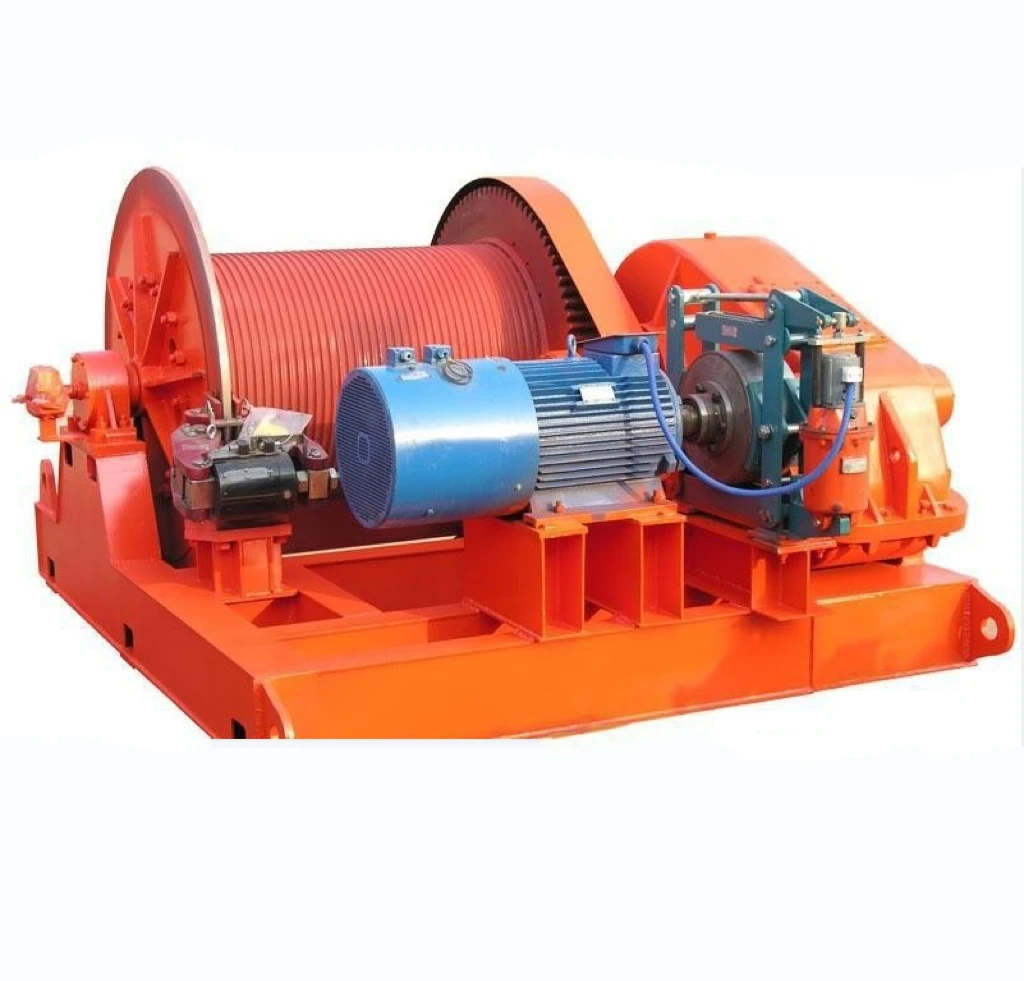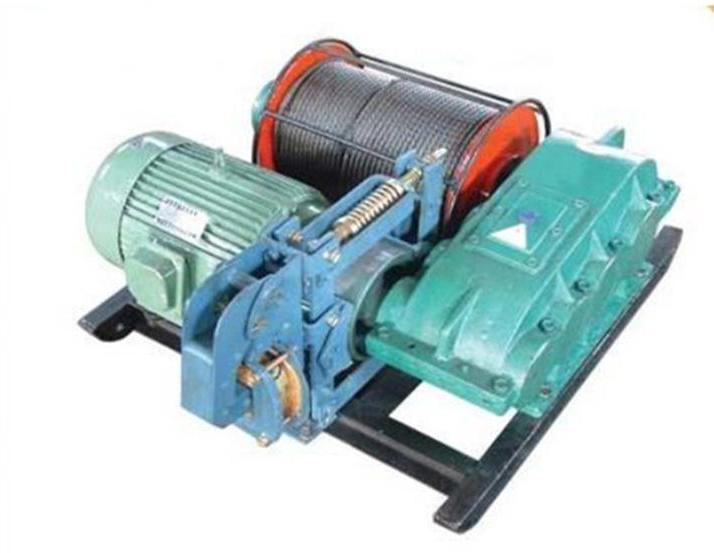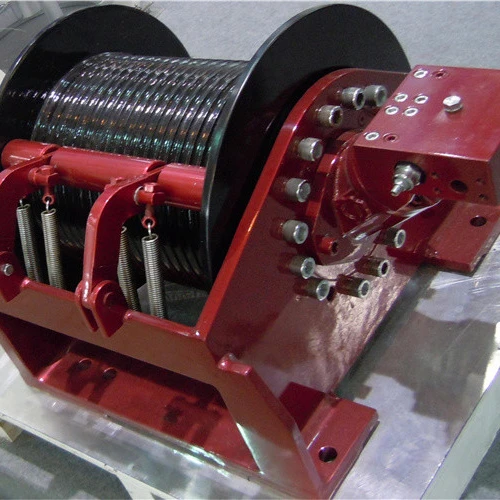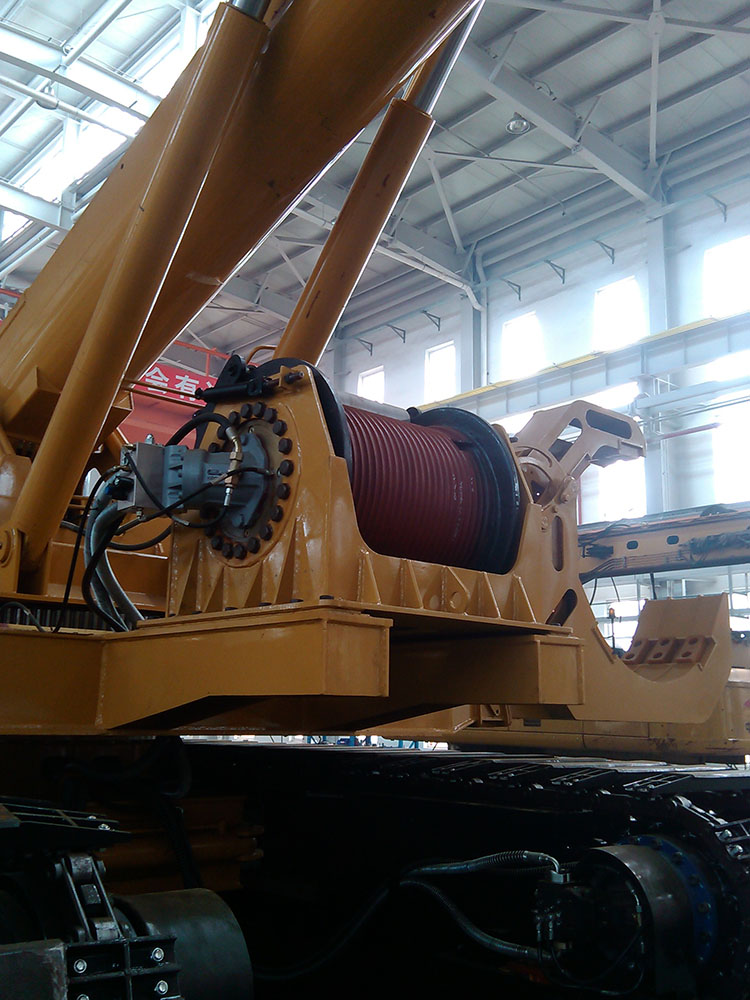Hydraulic Drum Winches: Powering Heavy Lifting with Precision and Durability
Understanding the Hydraulic Drum Winch: A Global Workhorse
Hydraulic drum winches might not grab the headlines in everyday conversations, but they quietly play a critical role worldwide. Whether in construction, marine operations, or disaster relief, these machines are vital tools for controlled lifting and pulling under challenging conditions. Grasping how hydraulic drum winches work, and why they matter, opens a window into both heavy industry’s past resilience and its future innovations.
Globally, mechanized lifting equipment like hydraulic drum winches supports infrastructure development and emergency response. With increasing industrialization, combined with climate-induced disasters becoming more frequent, understanding these winches is more than just technical trivia—it’s about recognizing how machines can impact lives and economies.
The Global Landscape of Hydraulic Drum Winches
According to the International Labour Organization (ILO), construction and manufacturing industries are among the fastest-growing globally, with labor-intensive tasks increasingly supplemented by mechanization. Hydraulic drum winches — being robust and versatile — fit this trend perfectly. Their use spans continents, from Asian shipyards to African mining sites and European renewable energy projects.
Yet, a common challenge remains: how to manage heavy loads safely and efficiently in environments where electric power may be unreliable or outright unavailable. This is where hydraulic systems shine — leveraging fluid power to generate consistent force without dependence on electricity, ideal for remote or harsh locations.
Mini Takeaway:
- Hydraulic drum winches are indispensable in industries with heavy lifting needs.
- They address challenges around power availability and safety in diverse environments.
What Exactly Is a Hydraulic Drum Winch?
In simple terms, a hydraulic drum winch is a mechanical device that uses hydraulic power to wind or unwind a cable or rope on a drum, creating force for pulling or lifting.
Unlike electric winches, hydraulic models harness pressurized fluid (usually oil) to operate motors that turn the drum. This makes them exceptionally suited for tough conditions — think deep-sea fishing vessels, forestry equipment, or emergency rescue gear — where durability and power are non-negotiable.
Oddly enough, they’re often overlooked outside expert circles, but they embody centuries of engineering evolution meshed with modern hydraulics.
Core Components of a Hydraulic Drum Winch
1. The Drum
The centerpiece where the cable coils. Its size determines line capacity and pull length. Plenty of engineers stress how drum diameter affects rope life and grip — smaller drums can cause damage to cables faster.
2. Hydraulic Motor
This powers the rotation. Hydraulic motors are prized for their torque at low speeds, which electric motors can struggle to deliver, especially under heavy loads.
3. Hydraulic Pump
The pump pressurizes the hydraulic fluid, driving energy to the motor. The quality and flow rate of the pump dictate how quickly and powerfully the winch can operate — a key factor in time-sensitive operations like rescue missions.
4. Control Valve System
Operators manipulate these to adjust direction, speed, and force. Precision here is huge, especially on job sites where inches matter.
5. Frame and Mounting
Durability stems largely from the structural framework. Frames made of high-grade steel resist wear and environmental stress like saltwater corrosion or dust, a vital factor in outdoor jobs.
Mini Takeaway:
- Understanding hydraulic drum winch parts helps in choosing the right machine for your application.
- Durability and control are paramount design considerations.
Where Does the Hydraulic Drum Winch Make a Difference?
Real-world applications are incredibly varied. Here’s a quick tour:
- Marine industry: Ships use these winches for anchor handling and cargo movement.
- Construction: Moving heavy materials, especially in remote sites without reliable electricity.
- Mining: Pulling equipment or materials, especially underground where electric sparks pose safety risks.
- Disaster relief: Post-earthquake or hurricane, winches pull debris or help erect temporary shelters.
- Renewable energy: Installing wind turbines often requires precise but powerful lifting — hydraulic winches come through here.
For example, in Southeast Asia’s flood-prone regions, NGOs depend on hydraulic drum winches to deliver supplies where roads have vanished. Similarly, Norwegian offshore oil rigs use these winches to safely deploy heavy equipment under turbulent seas.
Mini Takeaway:
- Hydraulic drum winches serve critical roles across many industries and geographies.
- They enable operations in challenging conditions where electric systems may fail.
Advantages That Keep Hydraulic Drum Winches in Demand
- Power & Reliability: They deliver consistent force day after day.
- Safety: Hydraulic systems reduce overruns and sudden failures compared to electric alternatives.
- Cost Efficiency: Lower energy consumption in some settings and less downtime translates to savings.
- Environmental Suitability: No sparks or electrical components reduce hazards in volatile environments.
- Long Lifespan: Rugged construction withstands brutal use.
Emotionally, operators feel trust — I suppose it’s the confidence of using something built tough enough to ‘just work’ when the stakes and stress run high.
Hydraulic Drum Winch Specifications at a Glance
| Specification | Typical Range / Description |
|---|---|
| Pulling Capacity | 1,000 kg to 50,000 kg |
| Drum Diameter | 200 mm to 1,200 mm |
| Line Speed | Up to 15 m/min |
| Operating Pressure | 100 to 300 bar |
| Power Source | Hydraulic pump (diesel engine or electric motor-driven) |
| Control | Manual or Remote Hydraulic Controls |
Comparing Leading Hydraulic Drum Winch Vendors
| Vendor | Pull Capacity | Customization | Price Range | Market Strength |
|---|---|---|---|---|
| LBS Winch Inc. | Up to 50,000 kg | Highly customizable controls & frame | $$$ | Strong in marine & industrial sectors |
| HydraTech Solutions | Up to 30,000 kg | Standard models with limited options | $$ | Popular in construction sites |
| Global Winch Corp. | Up to 40,000 kg | Wide range of specialized attachments | $$$ | Strong global shipping industry presence |
Looking Ahead: Trends and Innovations in Hydraulic Drum Winches
Hydraulic drum winches aren’t just stalwarts stuck in the past. There’s a quiet revolution underway.
The rise of hydraulic drum winch integration with digital controls means operators can now fine-tune tension and speed remotely, reducing risk on dangerous sites. Plus, greener hydraulics — fluid formulations that degrade naturally — and more efficient pumps mean we’re inching toward sustainable operations.
Automation looms, too. Imagine winches that detect load imbalances and compensate automatically, preventing cable wear or equipment damage. Oddly enough, it’s this blend of old-school muscle and modern tech that’s making these winches indispensable.
Challenges in Current Practices and How to Tackle Them
Of course, hydraulic drum winches have their quirks:
- Maintenance demands: Fluid leaks and seal wear need constant vigilance.
- Size and weight: Their robustness often means bulky setups.
- Operator skill requirement: Precise control isn’t always straightforward.
Smart monitoring systems and modular designs are emerging solutions, making upkeep easier and deployment faster. Plus, better training programs are bridging skill gaps, especially in developing regions.
FAQ: Your Top Questions About Hydraulic Drum Winches
1. What industries can benefit the most from hydraulic drum winches?
They’re especially valuable in marine, mining, construction, and emergency response industries. Wherever heavy pulling or lifting happens under tough conditions, these winches are powerful allies.
2. How do hydraulic drum winches compare to electric ones?
Hydraulic winches excel in environments where electrical hazards or power reliability are concerns. They offer higher torque at low speeds and often greater durability, albeit sometimes at a higher upfront cost.
3. Can hydraulic drum winches be customized for specific tasks?
Absolutely. Vendors often tailor drum sizes, control interfaces, and frame designs to client needs, making them flexible across multiple scenarios.
4. What regular maintenance does a hydraulic drum winch need?
Routine checks include inspecting hydraulic fluid levels, seals, hoses, and controlling systems for leaks or wear. Scheduled servicing ensures long-term reliability.
5. Are hydraulic drum winches eco-friendly?
While traditional hydraulic fluids pose environmental risks, newer biodegradable fluids and efficient designs reduce impact. Their longevity and reduced downtime also contribute positively.
Conclusion: Why Hydraulic Drum Winches Remain Essential
Summing up, the hydraulic drum winch stands as a symbol of dependable power, safety, and precision in demanding contexts. While challenges exist, continuous innovations in controls, materials, and sustainability ensure they stay relevant in an ever-changing world.
For anyone needing robust, flexible lifting solutions, exploring the options at LBS Winch might just yield the perfect match. After all, when your project depends on strength and reliability, a good hydraulic drum winch is not just a tool — it’s peace of mind.
References
-
Double Drum Hydraulic Winch – Durable, Efficient Load Handling SolutionsNewsNov.25,2025
-
Hydraulic Driven Winch – Reliable Heavy Lifting Solutions for Industry & ReliefNewsNov.24,2025
-
Hydraulic Crane Winch – Powerful & Precise Heavy Lifting Solutions | LBS WinchNewsNov.23,2025
-
Electric Over Hydraulic Winch: Efficient, Durable Lifting Solutions for Modern IndustryNewsNov.23,2025
-
Hydraulic Logging Winch Guide | Global Applications & InnovationsNewsNov.22,2025


